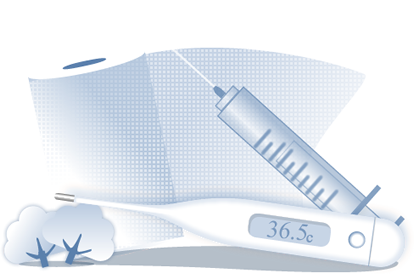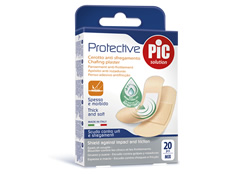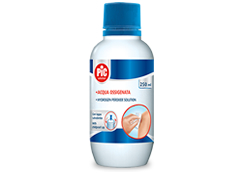
Keep calm and carry on: 4 dos and don'ts for treating cuts and grazes
So you've cut yourself? No worries, just stay cool. There are a few things you need to do to deal with a minor injury, like assessing and staunching the bleeding. Let's find out all about it together.
What to do: assess the cut or graze
OK, so you've managed to cut yourself. Try to keep calm and not panic, because you need to be together when it comes to treating cuts and grazes. You have to assess the severity of the injury in terms of depth, which you can easily do by eye. Then calculate the extent of the wound: if it's large and deep, don't hesitate - go right to the ER!
What to do: staunch the cut or graze
Normally, a wound will bleed. If you're losing a lot of blood, you'll need to get to the hospital quickly, but in the meantime, follow the same procedures that work for treating small cuts or grazes. Staunch the wound with a clean gauze bandage, which should be soaked in a little water. If there is bleeding from an artery, wrap a belt or a shirt around the top of the limb where the wound is.
What to do: wash the cut
Now that you've checked the severity of the wound (luckily it's not a deep cut!), you need to disinfect it with a product specifically for that like hydrogen peroxide or similar solutions, so that bacteria and microorganisms can't make their way into your body and cause infection. The disinfectant will help to staunch the bleeding, as well as eliminate bacteria.
What to do: put an adhesive bandage on the cut or graze
Don't worry, you've almost finished treating your cut or graze. Now's the time for the adhesive bandage, which will help to protect the wound from possible threats like the viruses and bacteria which are everywhere. The initial treatment has to be done quickly, but keep checking the injury: if the skin around the wound becomes reddened, go to the doctor.
What not to do: cotton wool
Avoid using cotton wool when treating cuts and grazes, even make-up pads. Cotton wool leaves fibers in the wound that encourage infection and slow the healing process down.
What not to do: be careful of dirt
Always keep the cut clean and don't leave any traces of dirt, blood or fluids on the affected area of the skin. If it hasn't been cleaned properly, your wound will take longer to heal and could even get worse.
What not to do: suntan with a wound
If you've treated the wound in the right way and it's already forming a scar, one of the worst things you can do is expose it to sunlight, as it dries out the skin, removing the moisture it needs for it to heal.
What not to do: use rubbing alcohol
One piece of advice: to treat a wound or graze, it's better not to use rubbing alcohol, as you run the risk of burning the wound and increasing the risk of infection as a result.













